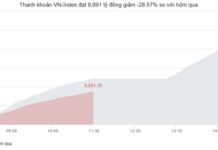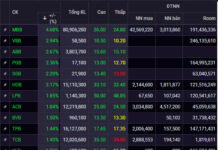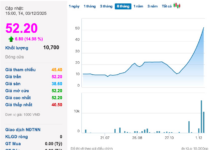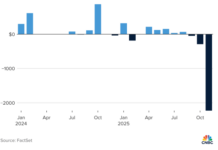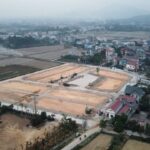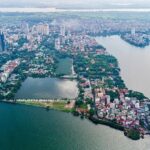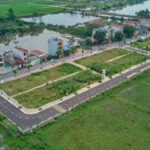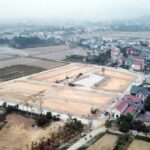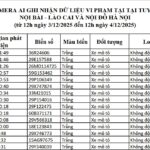The Overview Report on Informal Employment in Hanoi for the period 2021–2023, recently released by the Hanoi Employment Service Center, reveals that informal workers in the city continue to face challenges, ranging from lower incomes to a lack of benefits and protection.
INFORMAL WORKERS LACK ACCESS TO SOCIAL INSURANCE POLICIES
According to the report, as of 2023, the number of informal workers in Hanoi’s market stands at 1.89 million (an increase of 15.3% from the previous year), accounting for 50.17% of the total employed.
Informal workers in Hanoi are predominantly found in sectors with transient nature and low skill requirements. Most of them have a low level of education or are from rural areas, lacking opportunities for formal employment.
Informal workers earn significantly less than their formal counterparts. Incomes from primary jobs for the years 2021–2023 were VND 6.305 million, VND 8.572 million, and VND 8.303 million, respectively, equivalent to approximately 63%, 80%, and 71% of the incomes of formal workers in the same period.
The Hanoi Employment Service Center attributes this disparity to various factors, including the benefits and welfare schemes that formal workers are entitled to, as well as their more stable working conditions. Informal workers often face employment risks, lack clear labor contracts, and have limited access to social insurance, healthcare insurance, and other benefits.
When it comes to gender, there is a distinct income divide between men and women in both groups. Men consistently earn higher incomes than women across all years. This can be attributed to several factors, including the types of jobs that men and women engage in, as well as gender inequality in accessing career opportunities and advancement.
Men, whether in formal or informal employment, earn about VND 3 million more than women in the same group. In 2022, the income of formal male workers was VND 10.140 million, while that of female workers in this group was VND 7.441 million.
The income gap between formal and informal workers is more pronounced in urban areas, with a difference of approximately VND 4 million (an average income of VND 12.026 million for formal workers compared to VND 7.916 million for informal workers during 2021–2023). In rural areas, this gap narrows to approximately VND 1.5 million (an average income of VND 9.037 million for formal workers versus VND 7.617 million for informal workers over the same period).
These disparities may stem from variations in working conditions, job opportunities, and economic development between the two regions. Urban areas boast more robust industries and services, enabling higher incomes for workers. In contrast, rural workers are often engaged in agriculture or seasonal work, resulting in more precarious earnings.
INCOME DISPARITIES AMONG DIFFERENT GROUPS OF WORKERS
Notably, the status of workers significantly influences the income gap between formal and informal employment. During 2021–2023, informal workers earned approximately VND 2.4–3.7 million less than their formal counterparts.

This disparity was most prominent among registered and unregistered business owners (a difference of VND 9.2 million in 2022), possibly reflecting the challenges faced by unregistered businesses, such as limited access to capital and unstable consumer markets, along with a lack of support from government policies.
On the other hand, registered business owners can readily access financial resources and supportive policies, enabling them to maintain or even increase their incomes.
For wage workers, the gap is approximately VND 3 million, clearly illustrating the income disparity between formal and informal workers.
This gap underscores the superior income and working conditions enjoyed by formal workers, who are typically entitled to social and health insurance, stable employment contracts, and other welfare schemes.
In contrast, informal workers often grapple with job insecurity, a lack of fundamental rights, and difficulties in accessing government support.
The lowest average income was among informal workers in the agriculture, forestry, and fisheries sector, amounting to VND 4.652 million, VND 7.026 million, and VND 4.745 million per month for the years 2021–2023, respectively.
These figures are significantly lower than those in other sectors during the same period. For instance, the service sector recorded average incomes of VND 6.359 million, VND 9.34 million, and VND 8.456 million, while the industrial sector reported VND 6.255 million, VND 7.404 million, and VND 8.08 million for the same years.
The report also highlights that, within the informal economy, there is no gender-based variation in income rankings across different economic sectors. Nonetheless, across all sectors, the average income of informal male workers surpasses that of their female counterparts, indicative of income inequality between male and female workers in the informal labor market.
The most significant income gap is observed in the agriculture, forestry, and fisheries sector, where male workers earn 2.5 times more than their female counterparts, resulting in a substantial disparity in living standards and access to economic opportunities for women.
Although the income disparity between genders is not as pronounced in other sectors as in agriculture, forestry, and fisheries, a difference of approximately 1.5 times still persists.
The Hanoi Employment Service Center attributes the income gap between male and female informal workers to various factors, one of which is gender discrimination in recruitment and career advancement.
Bridging the income gap and improving working conditions for informal workers are crucial objectives, not only to safeguard workers’ rights but also to foster the sustainable development of the economy.
What’s the Land Price in Soc Son near the ‘3-billion VND per square meter’ Auction Area?
The Soc Son land auction on November 29 caused a stir with a plot reaching an astonishing 30 billion VND per square meter. Although the bid was not genuine, it has sparked curiosity about the actual land prices in the surrounding area.
The Golden Land Grab: A Tale of a $30 Million Dollar Per Square Meter Auction in Soc Son
The auction of a plot of land in Dong Lai village, Quang Tien commune, Soc Son district, Hanoi, sparked intrigue as a bidder offered an astonishing 30 billion VND per square meter before withdrawing. Located approximately 40 kilometers from the heart of Hanoi, the plot sits amidst village commune land and local farmers’ agricultural fields.
Suburban Land Auctions: Where Dreams Die and Prices Soar
After land auctions with thousands of participants, where prices were driven up to 5-14 times their starting value, recent land auctions have been plagued by further instability. Bidders offered prices of up to 30 billion VND per square meter in one round, only to offer zero in the next, or participants abruptly left the auction midway.

